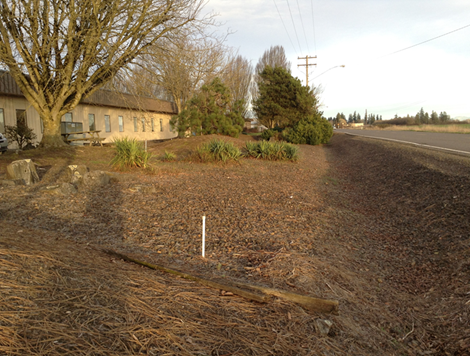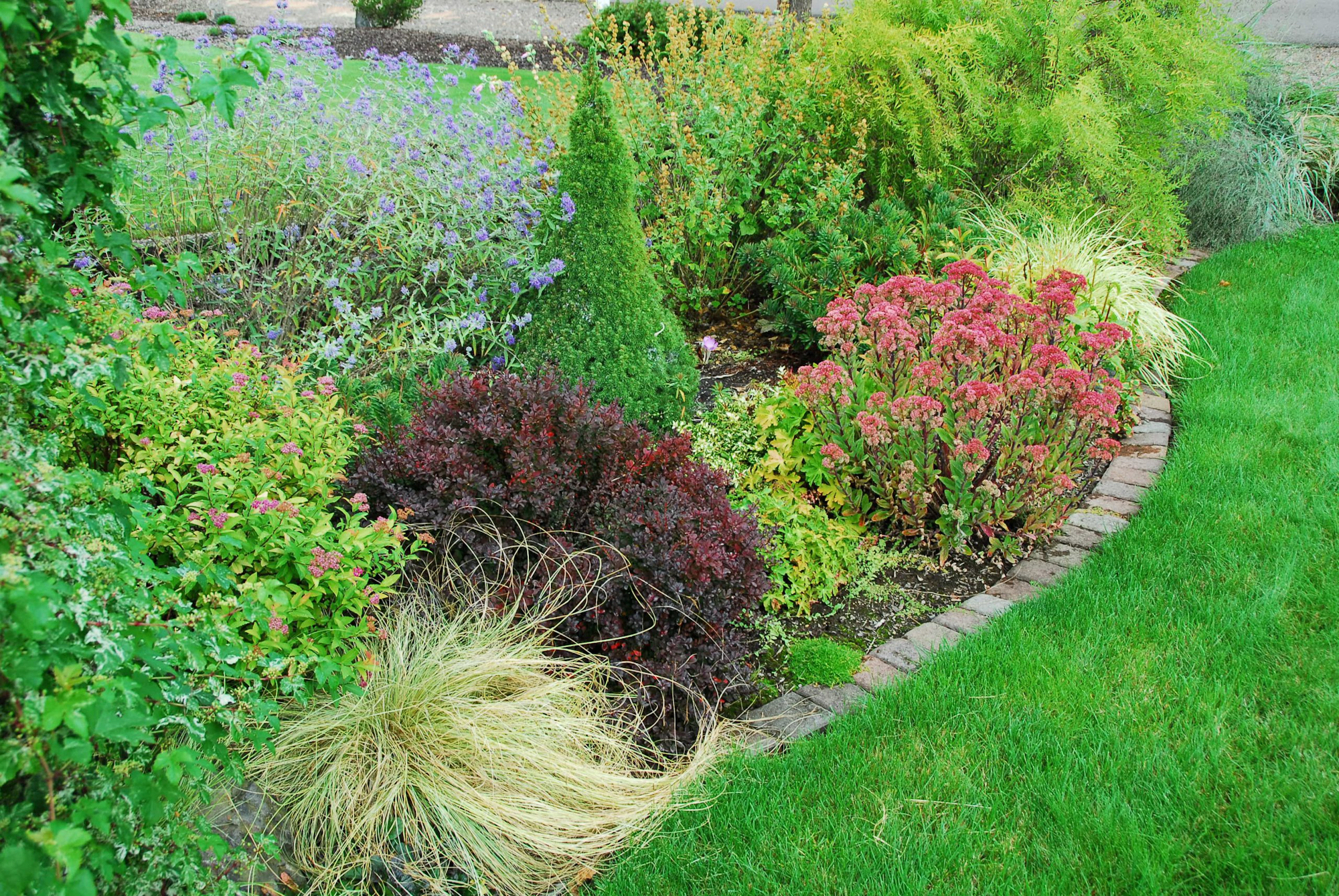The Dirt | What About Gravel Mulch?

One of the trendier ways to deal with landscape beds is to cover the soil with rocks. I’ve seen quite a few of these beds popping up around town. Customers of mine have have been asking about mulching with gravel because they have the idea that it’s more environmentally friendly. But is gravel much really better in our western Oregon climate?
There are lots of articles on the web that deal with the question: “What is the best way to cover a landscape bed? I’m going to try to answer that. Is it (a) organic mulch (bark, compost, or wood chips) or (b) gravel mulch? (Hint: The answer is “c”.)
Why is gravel mulch getting popular?
The main reason people want to cover their beds with gravel is that rocks last a really long time.
Gravel mulch also has a few other benefits:
- It helps preserve soil moisture, just like wood-based mulch or compost
- It is fire proof (For this reason, it sometimes makes sense to have a band of gravel around a building.)
- It doesn’t wash away in a downpour.
- It suppresses weeds (sort of…)
- Some people like the look. It fits a certain style of landscaping.
Let’s look at the longevity benefit. It’s quite true that stone doesn’t degrade (at least in our lifetime). But it still can disappear. Our rainy winters turn clayey soils into fine mud. Guess what happens in soppy mud? Heavy things like rocks go down, light things like clay particles move up. You can solve this problem, at least somewhat, by installing a layer of weed cloth or geotextile fabric under the rocks. But fabric has its own set of pros and cons that I won’t get into here…
What are some of the other effects of gravel mulch?
- Weeds in gravel look really bad. Weeds blend in with organic mulches better than gravel. This is especially true in municipal settings where maintenance schedules may only allow for weed control once or twice per year.
- The weeds that grow in gravel mulch are hard to get rid of, especially if you want to avoid using chemicals. In fact, gravel beds can create a dependency on sprays because it’s nearly impossible to remove weeds by hand or hoe in gravel. And, once those weeds get established, even if you spray them out, it’s still a lot of work to remove the dead plants.
- Planting is more work (especially if you have fabric under the gravel).
- Traps leaves and other debris. It’s easier to rake or blow things off organic mulch. Or, you can just leave most of the debris in a densely planted bed.
- If you do get tired of the gravel mulch, it’s LOTS of work to remove.
- Gravel traps heat. Again, especially in urban locations, there’s already so much concrete and asphalt holding heat. Adding rock only makes the problem worse.
- No habitat for pollinators and other wildlife. (OK, it’s good to not have some kinds of wildlife.)
- It’s hard to clean out dog poo. Need I explain more?
- Ammo for vandals. Why provide bored kids with everything they need to wreak havoc on a whole city block?
- Gravel doesn’t feed soil. Organic mulch breaks down and releases nutrients into the soil. Better yet, living roots support soil biology even more.
- It’s dead. In this time of climate change, we need more and more living plants to not only provide cooling, but also to capture carbon from the atmosphere.
- Gravel mulches are usually used in sparsely planted beds. Actually, a densely planted, gravel-mulched bed can eliminate some of the problems in this list, but why go to the trouble of planting in gravel or adding gravel very carefully around new plants?
So what’s the answer?

If you paid attention to that list of pros and cons, you’ll notice I threw in some hints about plants, roots, and densely planting. This is the real answer to the question of what’s the best way to cover a landscape bed. That’s topic for another article, but suffice it to say, there are lots and lots of benefits of covering your landscape bed with PLANTS.
A densely planted bed (if done right) can end up being less work and expense, and it can have real ecological benefits.
If you like the look of gravel, that’s fine with me. But when I look at a gravel bed, I see more work, hassle, and expense. And I see a missed opportunity to make your world a little bit better.
